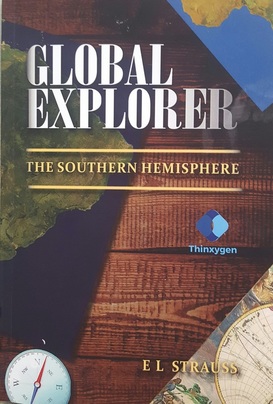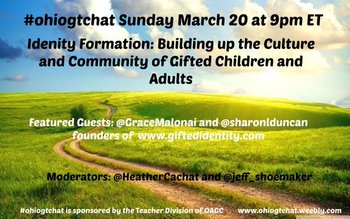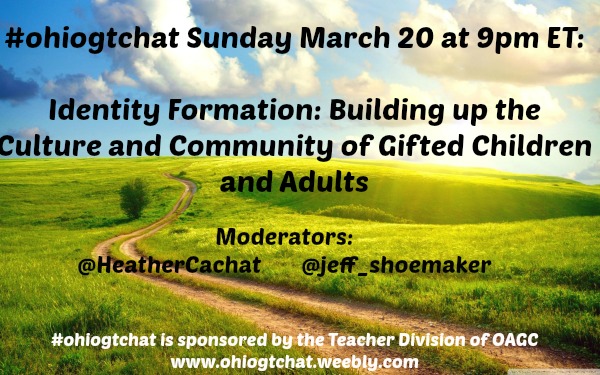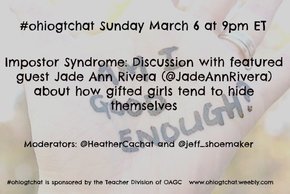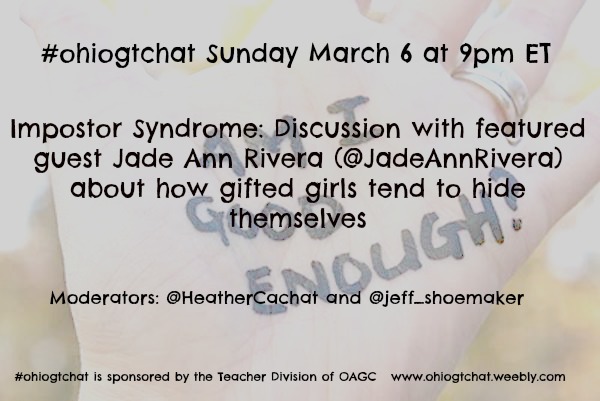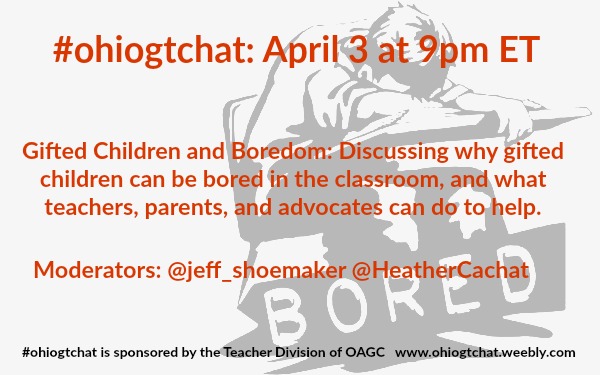
As boredom is measured through our own internal scale, it can be difficult for others to acknowledge something that can be different for them. This measurement is dependent on each person's ability level, freedom to change circumstances, and understanding of any underlying conditions. In this #ohiogtchat we will explore Gifted Children and Boredom, how to identify what's going, and ways to advocate for change.
Q1) How do you interpret what a child means when he or she says "I'm bored."? Is this a straightforward plea, or is there an underlying issue that needs discovered?
Q2) What are the dangers of an ill-adapted educational setting for a gifted child?
Q3) As an educator, what can we do to reduce or eliminate boredom in our students?
Q4) What is some advice on advocating with the school to eliminate boredom in your child's educational setting?
Q5) Outside of the classroom, outside of school, can boredom be beneficial?
__________________________________________________________________________________
Our next chat is April 17: Overexcitabilities: We will be looking at the 5 different OE traits and how they can effect gifted children. We will also discuss how we can help our gifted children navigate the world through OE. We are still looking for a featured guest for this chat who has experience working with gifted children with overexcitabilities. If you are interested please tweet @HeatherCachat or @jeff_shoemaker.
